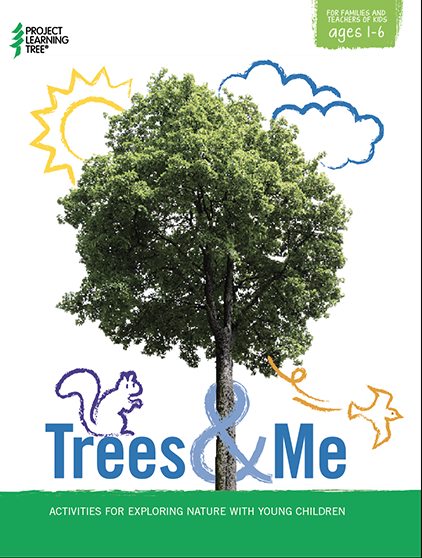Whether you grew up in the country, suburbs, or the heart of a city, your childhood likely included time spent outdoors, getting your hands dirty, and discovering the wonders of the natural world. Perhaps you stood in a park or your backyard and watched ants build an anthill, climbed a tree, or splashed in puddles. No wonder then that some of the most popular and beloved American and Canadian children’s books highlight the natural world and feature a few of our favorite animals, sparking a curiosity for our environment.
Jump to
STAFF FAVORITES
Introducing children to nature through books in the classroom and at home can help them develop awareness, knowledge, and appreciation of the environment, as well as the skills needed to make informed decisions for real-world challenges.
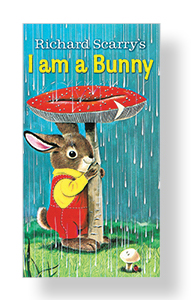
“The best part is the lovely and accurate illustrations depicting flora and fauna that are commonly found in North America. When I read it, I like to point out and state the common names of the species found throughout the book. Hopefully, it will help teach my kids to identify these plants and animals in the ‘real’ natural world and introduce them to the concept of biodiversity (a butterfly is not just a butterfly, but there are many different types!)” says Rachel.
Children’s books are an ideal tool to engage the next generation of environmental stewards and offer more benefits than just entertainment – engaging young people to understand and appreciate the importance of natural resources and conservation is critical to the protection of our planet. A study from Newcastle University in Australia found that pro‑environmental attitudes were reinforced by storybook animal characters with human characteristics because they encouraged children to empathise with other creatures.
In addition to bunnies, bats feature as popular protagonists among staff. No surprise there, as SFI’s conservation team recently shared their appreciation for our flying friends and the many ways forests and bats work together. Amara and the Bats and Stellaluna are a few of our favorite children’s books that encourage kids to become environmental stewards and develop empathy for these often misunderstood but critically important creatures, as bats are vital for pollinating plants and dispersing seeds for tree and plant growth. Be sure to read and share stories like Amara and Stellaluna’s to combat misinformation and celebrate bats with kids year-round, and especially during Bat Week in October.
Meggan Sleep, SFI’s Communications and Marketing Intern, fondly remembers the impact that Stellaluna and other books about nature had on her as a young child. In Janell Cannon’s story, a young fruit bat is separated from her mother ends up in a bird’s nest, where she is taken in by them and learns to behave like a bird, “Stellaluna taught me a great deal about acceptance and valuing others’ differences. It was so beloved that I used to rent it from the library every few weeks, until I ended up writing ‘Meggan owns this book’ on the front, and my mom bought me my own copy.”
By helping children understand their own feelings and those of others, stories about nature can have a positive impact on emotional development, an aspect of development that Annie Perkins, SFI’s Senior Director of Green Building and Supply Chains was intentional in cultivating in her own children. “I purposefully chose children’s books showcasing critters and our natural environment to read to my kids. I knew this would not only help foster a love and respect for nature, but also help cultivate the love and kindness needed for all humanity.”
ART AND ILLUSTRATIONS TO INSPIRE CHILDREN
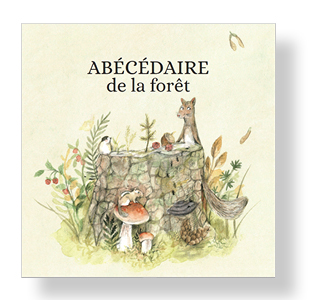
With support from a SFI Community Grant, Table Forêt Laurentides recently published their forest primer Abécédaire de la Forêt (the ABCs of Forestry) and made the book available to schools and libraries throughout the Laurentian Region of Québec, Canada. Learners of all ages can use the illustrations to go through the alphabet with 26 words related to the forest by reading a short definition and discovering a fun fact.
Abécédaire de la Forêt was illustrated by Mathilde Cinq-Mars and created for young children learning to read. The illustrations and descriptions throughout the book contribute to the development of forest culture, reading skills, and the promotion of a forest vocabulary unique to the province of Quebec. By illustrating the unique place-based plants of the region, the hope is that instilling positive environmental behaviors in children can help conserve Quebec’s natural environment for future generations. This is especially important to the region as Quebec contains one of the largest forest reservoirs in the world, accounting for 20% of Canadian forests and 2% of the world’s forests, according to Quebec’s Ministry of Forests, Wildlife, and Parks.
“We were looking for illustrations that would appeal to both adults and young people. Mathilde’s work is in line with the gentleness that the forest can bring us, and her illustrations are artistically realistic.”
MORE NATURE-FOCUSED RECOMMENDED READING
Continue inspiring the love and appreciation with your children by sharing these recommended reads for ages five and up. Bookmark the full list from PLT and be sure to sign up for more monthly resources at PLT.org/join.

Leaves
By David Stein
Ages 5 – 7
The warm, vibrant colours in this book invite young children to enjoy the fall season. A first-year bear cub explores the seasonal changes that occur, such as leaves changing colors and falling to the earth. Exhausted from attempting to make sense of this unexpected seasonal change, the bear uses the soft, fallen leaves as bedding for his long winter sleep…only to awaken to the discovery of a new family of budding leaves.

Trout are Made of Trees
By April Pulley Sayre
Ages 4 – 8
This book explains how leaves that fall into a stream can turn into trout. The leaves decompose into food for aquatic insects, which are eaten by trout, to become a picnic lunch for a fathers and children. The book’s illustrations show curious kids observing the cycle and recording their findings in their field notebooks.
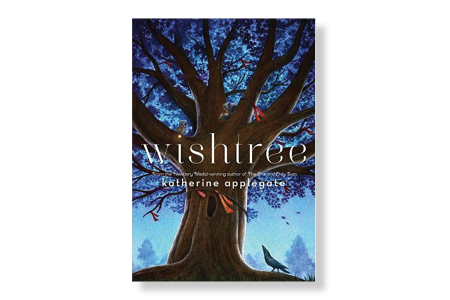
WishTree
By Katherine Applegate
Ages 8 – 12
Wishtree is a timely novel told from the perspective of a generations-old red oak tree. It is ideal for middle grade readers ready to move beyond illustrated narratives and into more complex subjects. Every May 1, adults and children alike bring their wishes, written on colorful paper or fabric, to tie to the branches of a 200+-year-old oak tree named Red. Red has overheard conversations from multiple generations of families and has many stories to tell.
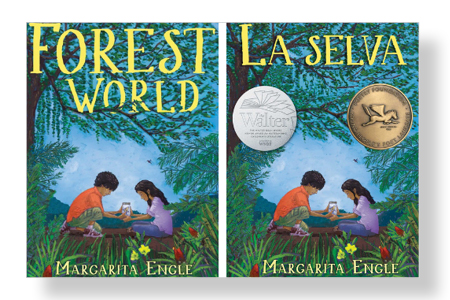
Forest World
By Margarita Engle
Ages 9 – 12
This novel tells the story of a young Cuban American boy. Though separated by only 90 miles, Miami and Cuba couldn’t seem further apart! At only 11 years old, Edvar’s mom puts him on a plane headed for the remote forests of Cuba to meet a father he has never known and a sister he never knew existed. With no phone, no internet, and a family of strangers, Edvar is in for one long summer full of surprises.
Looking for more tree and nature-focused recommended reading and activities for young learners?
Stay tuned for the release of PLT’s newest educational product, Trees & Me: Activities for Exploring Nature with Young Children, available March 15.
The guide contains hundreds of ideas for fun, hands-on experiences for families and teachers to connect children ages 1–6 to nature, with a special focus on trees. Through a combination of indoor and outdoor activities, families, educators, and natural resources professionals working with children will explore nature and experience trees throughout the seasons.
By Meggan Sleep, SFI’s Communications and Marketing Intern
